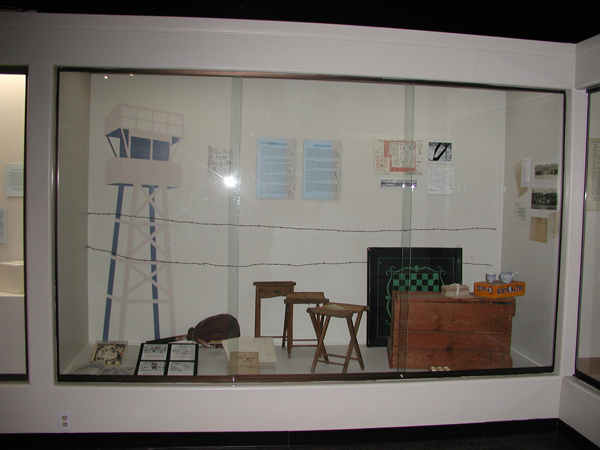Museum of Riverside

Reading the Walls Online Exhibit - Room #2 : Case 6
Incarceration

Initially, many "evacuees" were incarcerated in assembly centers for processing. These centers were hastily converted fairgrounds, racetracks, or labor camps. They were then transported by either train or bus with the windows covered, searched upon arrival, and given a cot, mattress cover, and blankets. These camps were located in remote areas of California, Arizona, Idaho, Wyoming, Colorado, Texas, and Arkansas. By August 1942, the War Relocation Authority (WRA) had completed the forced removal of 120,000 Japanese and Japanese Americans. These camps with their barbed wire fences and guard towers had been hastily built. The un-insulated barracks were constructed of pine planks covered with tarpaper and sheetrock. The WRA proclaimed these camps "were intended to provide humane and constructive living and working conditions." Families now lived in one room without any partitions. Meals were taken in mess halls. Bath and toilet facilities were communal and without partitions. Jess Stebler wrote Sumi from 1942 until her return to Riverside in 1945. His genuine affection for the family is evident in a postcard mailed on May 23, 1943, a year to the day after they left Riverside. He managed all their affairs—maintained their house on Lemon Street, served as property manager for their rental properties, paid taxes, and secured house insurance after they were dropped by their company. Those incarcerated struggled to create a sense of normalcy and community by organizing schools, gardens, sports teams, adult education classes, churches, and publishing camp magazines/newsletters such as Trek. Those who had left careers received limited employment with minimal pay. Harold earned $16/month as a hospital orderly, Sumi $12/month as a camp kitchen helper, and Masa Atsu as a surgeon earned $19/month.
Sumi, Harold, and Roy petitioned for a transfer to join their ill and elderly parents. Ten months later, in March 1943, they were reunited at the Topaz camp where Jukichi, Ken and Masa Atsu had been transferred. Within hours of their arrival, Ken Harada suffered a stroke and died. Her funeral was held on March 13, 1943. Sumi commemorated her mother in the poem, "My Mother." Jukichi, who had been too ill to attend his wife’s funeral, died nine months later in January 1944.


